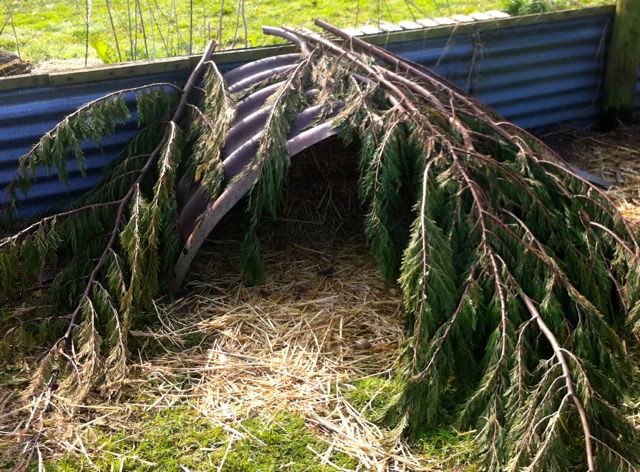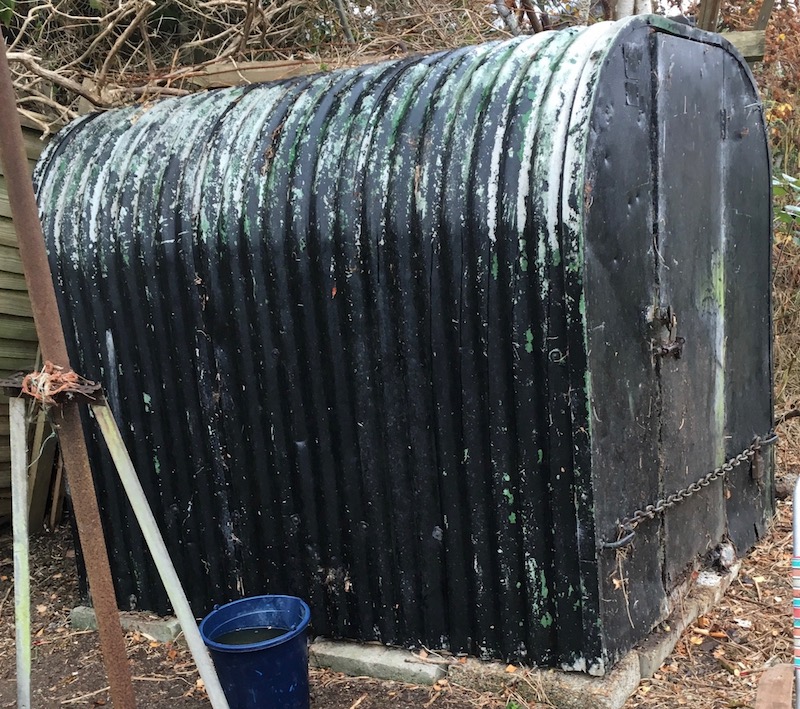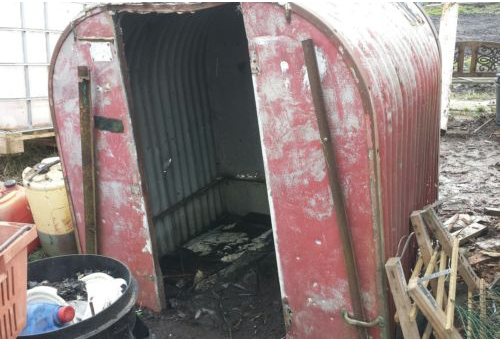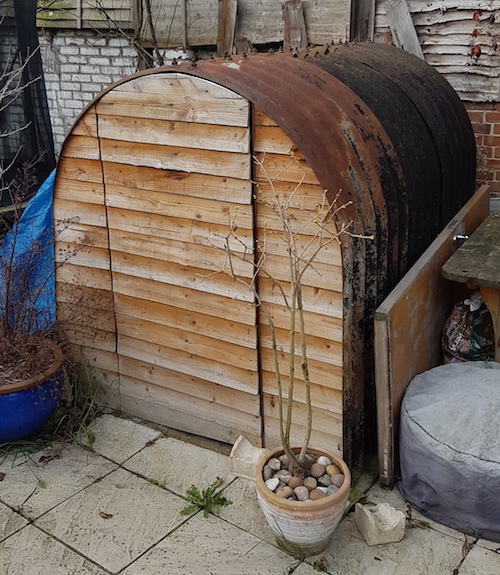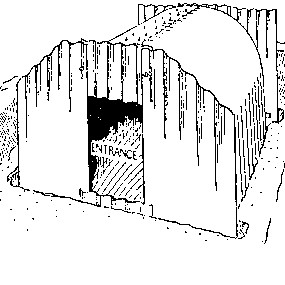The corrugated iron roofs of most of the shelters were collected by the authorities at the end of the war. Other shelters which were no longer needed were sold to the householders for £1 each (the equivalent of around £35 in 2015). These were often dug up and re-erected above ground, fitted with wooden doors and used as workshops or garden sheds. Much of the corrugated iron was also re-used by farmers.
Not all the sheds, animal shelters etc. that survive until today were once Anderson shelters but you can look at the following photos and decide whether your structure might have once been an Anderson shelter, or alternatively built with new metal after the war.
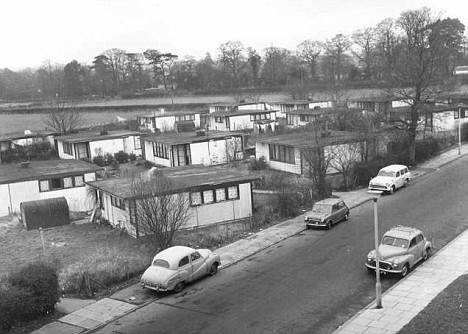
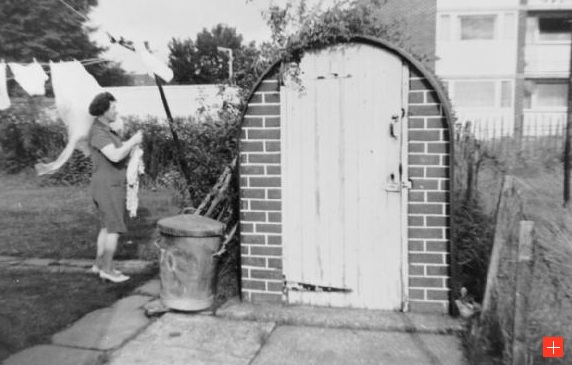
Amazingly, many of these re-positioned shelters are still in good condition today. Here is a sample of the examples that have been sent to me.


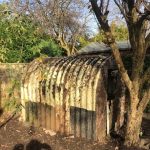
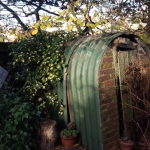
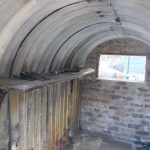
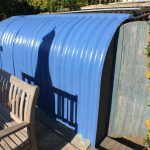
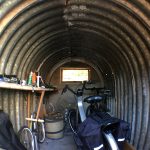

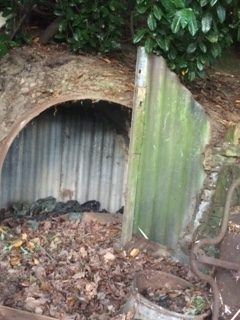
This photo is of half (or more accurately two-thirds) of a shelter in Sheffield.
It is still in its original position dug into a hillside (there was a tree growing on top of it) but instead of being 3 x panels in length it’s only 2 x panels.
The owner thinks it was cut to make room for a shed. The original entrance section may also have been cut in two to make some doors as in this photo.

I am grateful to Phil Hall for telling me about this structure which he found in a wood south of Westerham in Kent. It is about 4 metres long and has seven sheets of corrugated iron on each side, all set into a concrete base. It was presumably once used for agricultural purposes but is still in amazing condition given its age – and the fact that it is now supporting a rather heavy tree! Even the Trademark Staley maker’s marks are still very clear. The photo was taken in 2015. The Ordnance Survey grid reference (according to my GPS) is TQ 4534 5296.
Not to be outdone, Dean Miles sent me this photo of this structure, well over 10 metres long. It was also in Kent, this time near West Malling.

